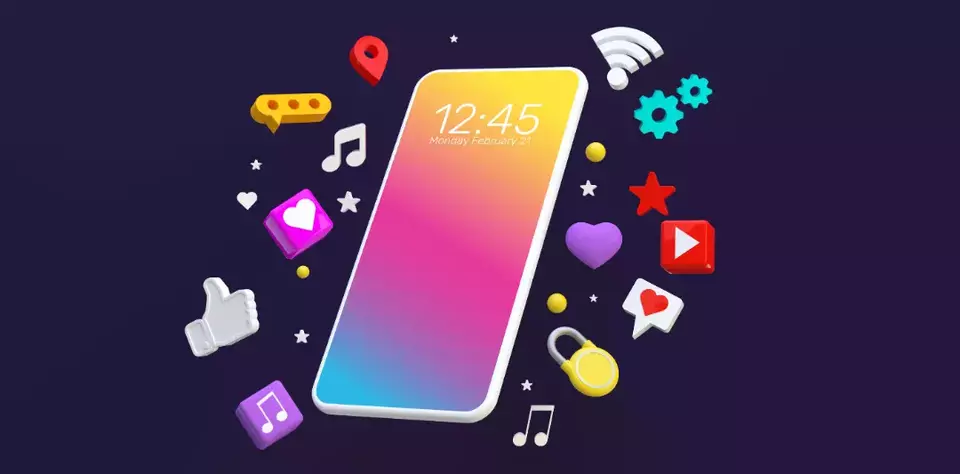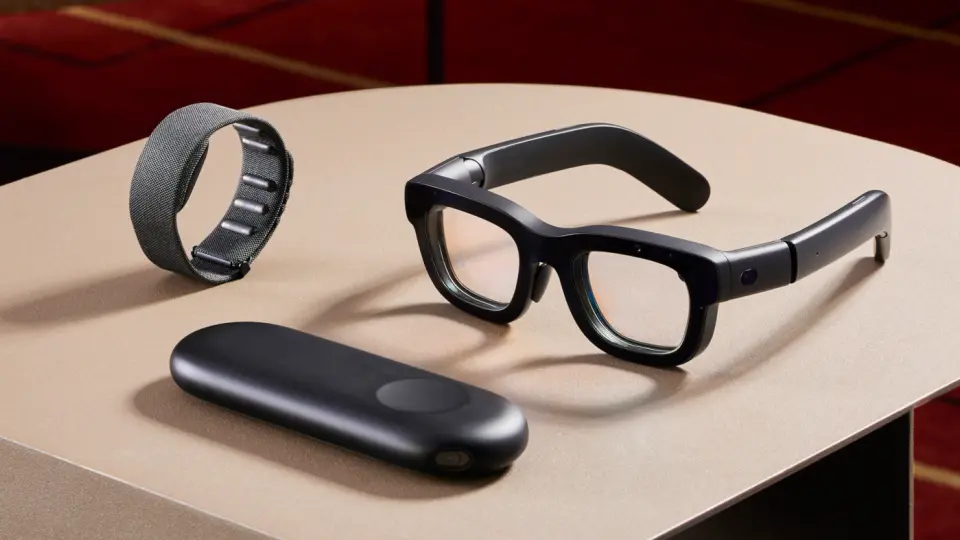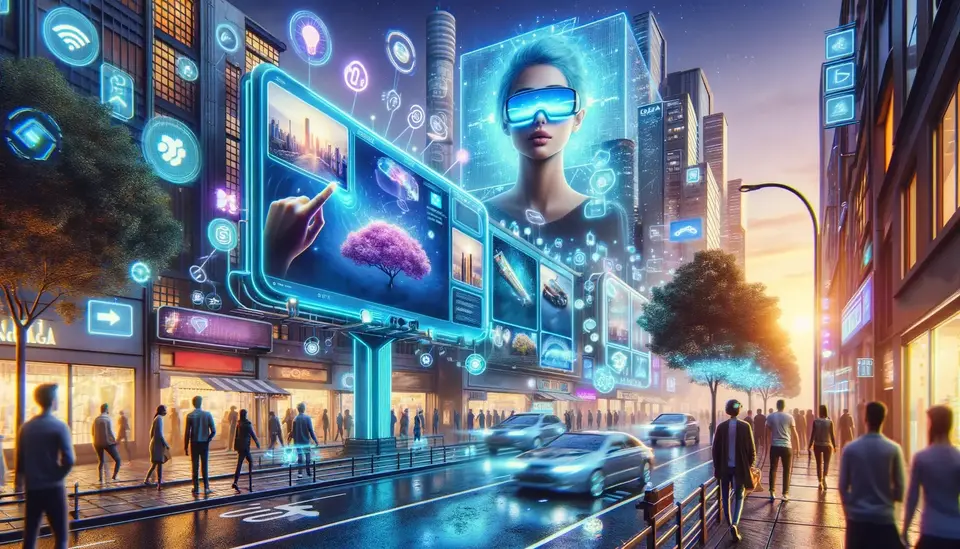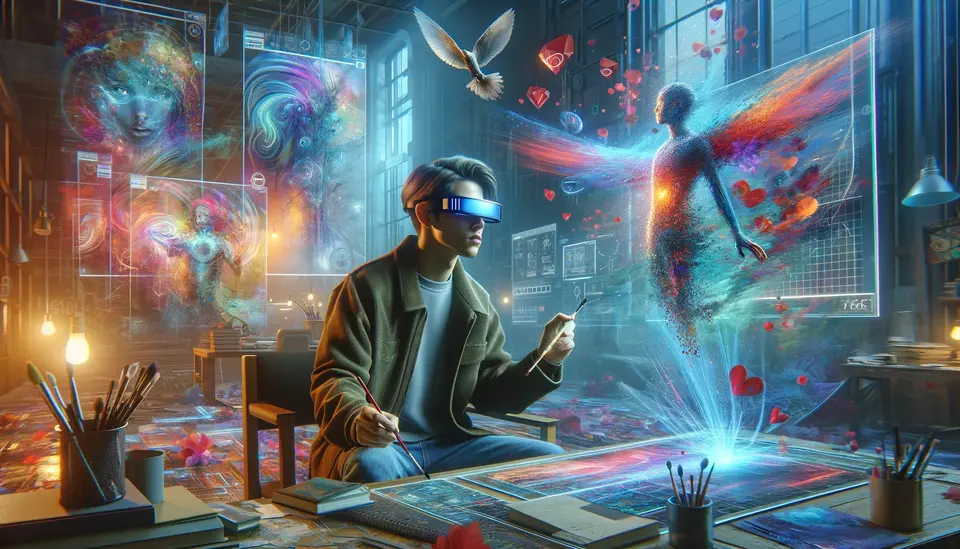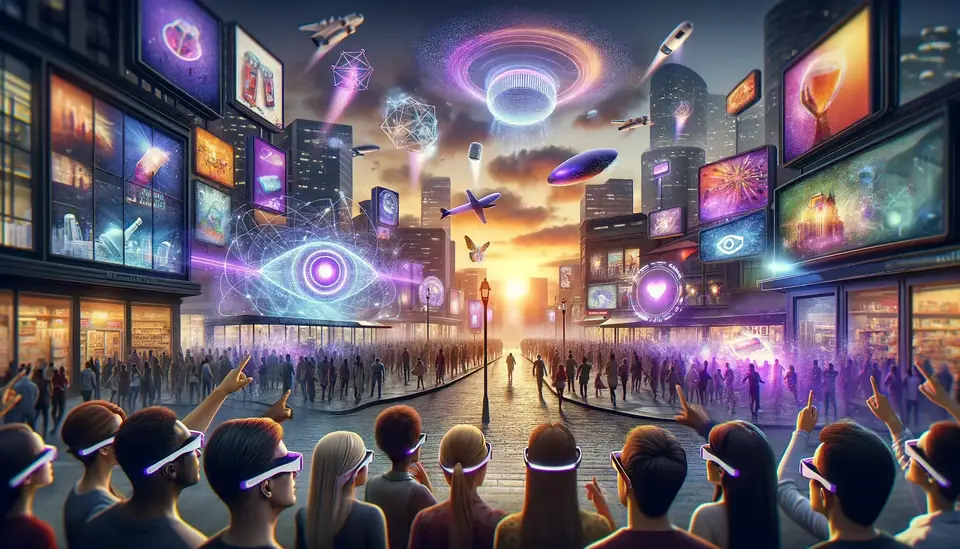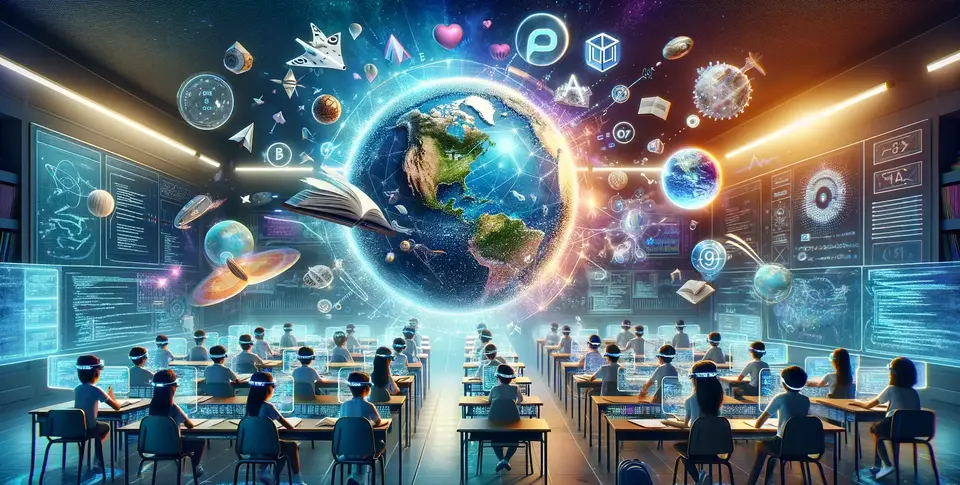5 Benefits of Augmented Reality (AR) in Our Lives
Posted on September 1, 2023 13 minutes 2621 words
Table of contents
Augmented Reality (AR) is no longer the stuff of science fiction. With its ability to overlay digital information on the real world, AR technology has seamlessly transitioned from experimental to essential. From education to healthcare, AR is revolutionizing the way we experience the world around us. In this article, we’ll dive into five compelling ways AR enriches our lives.
1. Enhanced Learning and Education
Bridging the Gap between Reality and Imagination
For educators, one of the longstanding challenges has been bringing abstract concepts to life for students. While traditional teaching methods like lectures, textbooks, and diagrams serve an essential purpose, they often fall short in engaging learners fully. This is where Augmented Reality (AR) shines, bridging the gap between the abstract and the tangible.
Tailored and Immersive Experiences
AR’s most profound impact on education lies in its ability to create tailored and immersive learning experiences. By overlaying digital data on the real world, AR transforms passive learning into an interactive exploration.
Examples
-
Visualizing Complex Subjects: Traditionally, students relied on static images and diagrams in textbooks to understand concepts such as molecular structures or the intricacies of the solar system. With AR, these concepts spring to life. A student can, for instance, manipulate a 3D molecule, observing its structure from all angles or walk around a scaled version of our solar system, observing the planetary orbits in real-time.
-
Virtual Field Trips: Financial constraints, logistics, or global pandemics can limit educational excursions. AR offers a solution. Instead of reading about the Egyptian pyramids, students can embark on a virtual tour, exploring the ancient tombs and deciphering hieroglyphics as they go. This not only enriches their understanding but also nurtures a sense of curiosity and wonder.
-
Hands-on Training: Particularly in fields where hands-on training is vital but traditional resources are limited, AR can be a game-changer. For instance, aspiring biologists can dissect virtual frogs, understanding anatomy without the limitations of actual specimens.
Customized Learning Paths
Every learner is unique, possessing different strengths, weaknesses, and preferences. AR apps can be tailored to adapt to individual learning paths, offering resources and challenges best suited for each student. For instance, a student struggling with trigonometry might receive AR-enhanced visual demonstrations of concepts, while another might get advanced problems to solve, all within the same classroom.
Encouraging Collaboration and Creativity
AR isn’t just about individual experiences. It’s a collaborative tool. Students can work together on AR projects, whether it’s building a virtual model of a sustainable city or recreating historical events. Such projects not only foster teamwork but also allow students to approach problems creatively.
Reducing Cognitive Load
A crucial aspect of learning is the retention of information. AR can simplify complex topics, breaking them down into easily digestible, visual components. This reduction in cognitive load makes it easier for students to grasp, retain, and recall information.
In a rapidly evolving educational landscape, AR is proving to be more than just a flashy tool. It’s a genuine ally in making learning more engaging, effective, and tailored to individual needs. As technology progresses and becomes more accessible, we can only anticipate the further transformative impact of AR in classrooms and learning environments worldwide.
2. Improved Shopping and Retail Experience
Revolutionizing the Retail Realm
The brick-and-mortar store, while nostalgic, has its limitations, especially in a digital age. On the flip side, while online shopping offers convenience, it lacks tangibility. Augmented Reality (AR) emerges as the bridge between the digital convenience and the tangible experience, offering customers the best of both worlds.
Making Informed Decisions with AR
One of the primary reservations consumers have with online shopping is the uncertainty – will the product look as it does in the picture? Will it fit? Will it match my living room décor? AR mitigates these uncertainties.
Examples
-
Virtual Try-On: Fashion retailers have long grappled with online returns due to size and fit mismatches. With AR, customers can virtually ‘wear’ clothing, accessories, or even makeup. It’s not just about seeing if a dress fits; it’s about viewing it from different angles, pairing it with various accessories, or even checking if a lipstick shade goes with a particular outfit.
-
Home Decor and Furnishing: Purchasing furniture or home decor can be tricky. AR applications allow users to visualize how a new sofa might fit into their living room or if a wall color complements their aesthetics. Instead of imagining, they can see it.
Enhancing In-Store Experiences
For traditional retailers, AR isn’t about replacing the physical store but enhancing it.
- In-Store Navigation: Large stores can be overwhelming. AR-powered apps can guide shoppers directly to the items they seek, perhaps even suggesting complementary products or offering reviews as they browse.
- Interactive Product Details: Pointing an AR-enabled device at a product can pull up detailed information – from its origin to how it’s made, its environmental impact, user reviews, and even recipes or usage ideas for certain products.
Personalized Shopping Journeys
Each shopper is unique, and AR can cater to individual preferences and needs. For instance, a person looking for vegan products can get real-time AR annotations highlighting suitable items as they walk down a store aisle.
Engaging and Interactive Marketing
Brands can engage customers in entirely new ways. AR-enabled advertising can allow potential buyers to interact with products before making a purchase decision. A poster advertisement for a new car, when viewed through an AR app, could allow viewers to change its color, view it from various angles, or even virtually “sit” inside to explore the interior.
Streamlining the Checkout Process
Some AR applications offer instant checkout options. If a shopper likes what they see in their AR view, they can add products to their cart and check out without traditional scanning – a blend of the digital and physical shopping cart.
Augmented Reality is more than just a novelty in the retail sector; it’s an evolution. As technology continues to advance and integrate into our daily routines, AR promises to make shopping more interactive, informed, and personalized. Retailers and consumers alike stand to gain from embracing this digital transformation.
3. Support in Healthcare and Medical Training
Healing with a Digital Touch
In an industry as critical as healthcare, the confluence of human expertise and technological advancements can lead to profound results. Augmented Reality (AR) is emerging as one such technological marvel, offering solutions that not only assist medical professionals but also enhance patient care and experience.
A New Lens to Patient Care
With its ability to overlay virtual data on the real world, AR provides a new perspective on patient care, making procedures safer, more efficient, and precise.
Examples
-
Guided Procedures: Even the most experienced surgeons sometimes face challenges in complex surgeries. AR can provide real-time, overlaid guidance. For example, during a tumor removal, AR can highlight the tumor’s margins, ensuring its complete removal while preserving the surrounding healthy tissues.
-
Patient Education: Understanding a medical condition, treatment, or procedure can be daunting for patients. AR applications can visually demonstrate medical conditions, potential treatments, and post-surgery care. This not only informs patients but can also alleviate their anxieties.
-
Physical Rehabilitation: Physical therapy requires precision. AR can guide patients, ensuring they perform exercises correctly, maximizing recovery, and minimizing the risk of further injury.
Augmenting Diagnosis and Treatment Plans
The initial stages of healthcare – diagnosis and treatment planning – are critical. AR aids in enhancing the accuracy and efficiency of these stages.
-
Enhanced Imaging: Traditional imaging techniques like X-rays, MRIs, and CT scans provide a wealth of information. However, interpreting these images requires expertise. AR can overlay these images with digital annotations, making it easier for medical professionals to interpret and understand them.
-
Customized Treatment Plans: Every patient is unique, and so should be their treatment plan. AR can assist doctors in visualizing how different treatments might affect the patient, enabling them to tailor medical strategies for optimal results.
Revolutionizing Medical Training
Medical training is intricate, demanding hands-on experience, which can sometimes be challenging to achieve. AR brings unprecedented opportunities to this domain.
-
Virtual Dissections and Surgeries: While traditional cadaver dissections offer invaluable learning, they come with limitations. AR allows medical students to perform virtual dissections, offering the ability to explore and re-explore human anatomy without constraints. Similarly, students can virtually practice surgeries, preparing them for real-life operations.
-
Real-time Feedback: During training sessions, AR can offer instant feedback. If a medical trainee makes an incorrect incision during a virtual surgery, the AR system can immediately correct and explain the error, facilitating a robust learning process.
-
Remote Collaboration: AR can connect medical professionals from across the globe. A surgeon in one country can guide a procedure in another, using AR as the medium, ensuring that expertise can be shared, irrespective of geographical boundaries.
In the realm of healthcare, where the margin for error is minimal and the stakes are life-altering, Augmented Reality offers invaluable support. It acts as an additional layer of expertise, enhancing the capabilities of medical professionals and the quality of patient care. As AR technology continues to evolve, its role in healthcare promises to be even more instrumental.
4. Enhancing Tourism and Exploration
Discovering the World through Augmented Lenses
Tourism, at its core, is about exploration and discovery. As travelers, we seek to understand places, cultures, histories, and stories. Augmented Reality (AR) adds depth to this quest, providing layers of enriched experiences that go beyond traditional guidebooks or tours.
Revitalizing Historical Sites
One of the primary charms of visiting historical landmarks is connecting with their rich past. However, the passage of time often leaves these places with just a whisper of their former grandeur.
Examples
-
Reconstructing Lost Structures: Imagine standing amidst the ruins of an ancient civilization and, through AR, witnessing its cities and temples reconstructed to their prime. Visitors can stroll through bygone eras, gaining a vivid understanding of architectural marvels that once stood.
-
Interactive Storytelling: While plaques and guides can narrate historical tales, AR brings stories to life. Standing on a battlefield, one might see virtual reenactments of historical events, hear the sounds, or listen to narratives from figures of the past, fostering a deeper connection with history.
Customizing the Tourism Experience
The diverse interests of travelers often mean that one size doesn’t fit all when it comes to tourism.
-
Personalized Tours: With AR, tourists can tailor their experiences. Art enthusiasts might receive detailed insights about artworks and artists at a museum, while architecture buffs might get information on building techniques and historical contexts.
-
Language Translation: For global travelers, language can be a barrier. Pointing an AR-enabled device at signs, menus, or information boards can offer instant translations, making navigation in foreign lands a breeze.
Blending the Digital with the Physical
Modern cities are not just about historical sites; they’re about contemporary experiences that blend the physical with the digital.
-
Virtual Graffiti and Art: Streets can turn into dynamic canvases. Artists can create virtual graffiti or installations that tourists access through AR devices, allowing for an ever-evolving urban art gallery.
-
Interactive Cityscapes: Tourists can engage with cities in novel ways. An AR application might turn a city square into a virtual treasure hunt or a storytelling platform, adding playful dimensions to exploration.
Augmenting Natural Wonders
Nature, in its vastness, has always been a primary draw for tourists. AR can elevate the experience of exploring natural landscapes.
-
Wildlife Identification: While trekking in a forest or snorkeling in a coral reef, AR can help identify and offer information on various species, enhancing the understanding and appreciation of biodiversity.
-
Stargazing Enhanced: The night sky is a wonder, and with AR, stargazing becomes educational and mesmerizing. Pointing a device at constellations can reveal myths, scientific data, and more.
Tourism, powered by Augmented Reality, is no longer just about seeing; it’s about deeply experiencing, understanding, and interacting. As the world of AR expands, so does the horizon of what’s possible in tourism and exploration, promising journeys filled with enriched insights and personalized adventures.
5. Facilitating Maintenance and Repair
Mending with Augmented Precision
In the realm of maintenance and repair, precision and efficiency are paramount. Whether it’s a car mechanic diagnosing an engine issue or a technician fixing intricate machinery, Augmented Reality (AR) stands out as a powerful ally, transforming traditional methods into tech-driven, streamlined processes.
Guided Repairs with Real-Time Feedback
Diagnosing issues and conducting repairs often involves relying on manuals, past experience, or external guidance. AR brings expertise directly to the technician’s eyes.
Examples
-
Overlaid Instructions: Imagine a technician wearing AR glasses while examining a malfunctioning engine. As they survey the machinery, digital overlays might highlight problem areas, offer detailed visual instructions, or even play tutorial videos relevant to the components in view.
-
Remote Expert Assistance: Not all technicians will be experts in every facet of repair. AR allows a specialist from anywhere in the world to see what the on-site technician is seeing, guiding them through complex repairs in real-time.
Enhancing Training and Skill Development
Training in maintenance and repair is traditionally hands-on, requiring actual machinery or equipment to practice on, but AR is changing the game.
-
Virtual Hands-On: Trainees can use AR to practice repairs on virtual machinery, making mistakes and learning from them without any real-world consequences. This kind of immersive training ensures technicians are well-prepared before they tackle real tasks.
-
Continuous Learning: The world of machinery and equipment is continuously evolving. AR can offer technicians up-to-date tutorials, helping them stay abreast of the latest technologies and repair methodologies.
Safety and Risk Management
Maintenance and repair tasks can sometimes be hazardous. AR aids in ensuring safety protocols are upheld.
-
Safety Alerts: When a technician is about to make a potentially risky move, AR systems can send real-time alerts or provide safer alternatives. This can be particularly beneficial in sectors like aerospace, heavy machinery, or electrical repairs.
-
Machinery Health Monitoring: Preventive maintenance is vital. AR can analyze machinery and predict potential breakdowns, suggesting preemptive repairs and reducing the risk of catastrophic failures.
Streamlining Documentation and Reporting
Post-repair documentation is essential for maintaining records, ensuring compliance, and analyzing performance.
-
Automatic Logging: As technicians use AR to diagnose and repair, the system can automatically log the actions taken, creating a detailed and accurate record without manual input.
-
Visual Reports: Instead of reading through verbose reports, stakeholders can view AR replays of repairs, understanding the exact nature of issues and the measures taken to rectify them.
Augmented Reality, in the context of maintenance and repair, is not just a futuristic tool but a present-day necessity. It promises to refine techniques, enhance safety, and cultivate a more knowledgeable workforce. As AR technology matures, its influence in facilitating repairs and maintenance is set to become even more pronounced, ensuring industries operate smoothly and efficiently.
Conclusion
Redefining Reality: The Augmented Era
In an age where technology stands at the crossroads of imagination and reality, Augmented Reality (AR) emerges as a beacon of transformative innovation. Beyond the confines of just another technological marvel, AR represents a paradigm shift. It’s not just about superimposing digital elements onto our real world; it’s about elevating our perception, enriching our experiences, and challenging the boundaries of what we deem possible.
The myriad sectors AR touches upon — from healthcare and education to tourism and maintenance — bear testament to its versatile prowess. Each application of AR, whether in a classroom or an ancient historical site, underscores its potential to redefine, revitalize, and revolutionize.
Yet, AR is still in its nascent stages. As the technology matures, as developers explore its vast horizons, and as industries adapt, the future promises a landscape where AR will be as ubiquitous as the smartphones of today. The horizon is not just about technological growth; it’s about a societal transformation, where our daily experiences, tasks, and interactions are continually enhanced, streamlined, and reimagined.

